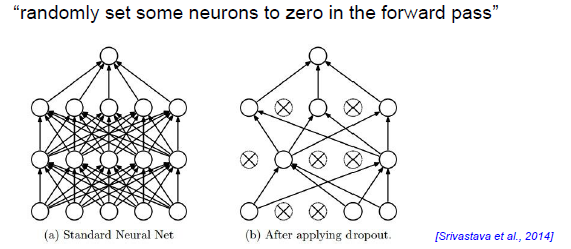FFDNet---matlab 调用并批处理
format compact; global sigmas; % input noise level or input noise level map addpath(fullfile('utilities')); folderModel = 'models'; folderResult= 'results'; save_folder = 'datasets_c'; showResult = 1; useGPU = 0; % CPU or GPU. For single-threaded (ST) CPU computation, use "matlab -singleCompThread" to start matlab. pauseTime = 0; imageNoiseSigma = 50; % image noise level inputNoiseSigma = 50; % input noise level load(fullfile('models','FFDNet_gray.mat')); net = vl_simplenn_tidy(net); if useGPU net = vl_simplenn_move(net, 'gpu') ; end file_name = 'E:\QQ\401668597\FileRecv\af2019-cv-training-20190312\'; sub_file_name_list = dir(file_name); %获取所有子文件夹 num_sub_file = length(sub_file_name_list); if num_sub_file>0 for fn = 3:num_sub_file image_file = ['E:\QQ\401668597\FileRecv\af2019-cv-training-20190312\',sub_file_name_list(fn).name,'\']; image_file_b = [image_file,'*_c.jpg']; image_list = dir(image_file_b); %得到该文件夹的所有图像的名字 for in = 1:length(image_list) image_name = [image_file,image_list(in).name]; fprintf('%d,%s',in,image_name); %开始进行处理 label = imread(image_name); %打开图像 [w,h,~]=size(label); if size(label,3)==3 label = rgb2gray(label); end label = im2double(label); % add noise randn('seed',0); noise = imageNoiseSigma/255.*randn(size(label)); input = single(label + noise); if mod(w,2)==1 input = cat(1,input, input(end,:)) ; end if mod(h,2)==1 input = cat(2,input, input(:,end)) ; end % tic; if useGPU input = gpuArray(input); end % set noise level map sigmas = inputNoiseSigma/255; % see "vl_simplenn.m". % perform denoising res = vl_simplenn(net,input,[],[],'conserveMemory',true,'mode','test'); % matconvnet default % res = vl_ffdnet_concise(net, input); % concise version of vl_simplenn for testing FFDNet % res = vl_ffdnet_matlab(net, input); % use this if you did not install matconvnet; very slow % output = input - res(end).x; % for 'model_gray.mat' output = res(end).x; if mod(w,2)==1 output = output(1:end-1,:); input = input(1:end-1,:); end if mod(h,2)==1 output = output(:,1:end-1); input = input(:,1:end-1); end if useGPU output = gather(output); input = gather(input); end if showResult %imshow(cat(2,im2uint8(input),im2uint8(label),im2uint8(output))); imshow(cat(2,im2uint8(input),im2uint8(output))); save_dir = [save_folder,image_list(in).name] imwrite(output,save_dir); % %imwrite(im2uint8(output), fullfile(folderResultCur, [nameCur, '_' num2str(imageNoiseSigma,'%02d'),'_' num2str(inputNoiseSigma,'%02d'),'_PSNR_',num2str(PSNRCur*100,'%4.0f'), extCur] )); drawnow; pause(pauseTime) end end end end
Adam不会让你的学习速率降为0,因为它是leaky gradient; 如果使用的是Adagrad, 学习率最后会自动的下降为0。
集成学习
1. 对训练集中大量独立的模型进行训练,而不仅仅对于单一模型;
2.在测试的时候将结果进行平均。(效果可以提高2%的提升)
使用集成学习的小技巧
当你在训练神经网络时设置一些检查点,通常是每个时期建立一个,对每个检查点都去验证这在验证集中的表现。
这说明你可以在模型中设置不同的检查点,然后在处理集合中使用它们,这被证明能够使得结果有所改善,这样的话你不需要对不同的独立模型进行训练,而只需要训练一下,但是需要设置相应的检查点。
while True: data_batch = dataset.sample_data_batch() loss = networdk.forward(data_batch) dx = network.backward() x +=-learning_rate * dx x_test = 0.995*x_test + 0.005*x # use for test set 类似于一个加权的加权的概念
设定了另一个参数集合x_test,x_test是对我现在的参数x的一个指数衰减,当使用x_test和数据集和验证集的时候,得到的结果总是要比使用x更好,这就像一个之前一些参数进行加权的集合。
想一下对你的碗装函数进行优化,在最低点周围不停的移动,然后做一个对这些所有的一个平均值,能够更加接近最低点。
Regularization(dropout)

然你的神经网络的节点随机失活,随机把一些神经元置零,
p = 0.5 #probablity of keeping a unit active. higher = less dropout def train_setp(X): #forward pass for example 3-layer neural network H1 = np.maxium(0, np.dot(W1, X) + b1) # first dropout mask U1 = np.random.rand(*H1.shape) < p #产生了一个bool型的和 H1相同维度的矩阵